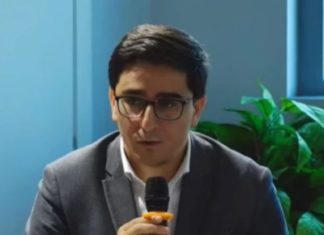By Muriel Mirak-Weissbach
Special to the Mirror-Spectator
BOCHUM, Germany — What do Germans know about Armenians? The answer will vary from city to city and from one social layer to another. But surely overall it can be said, they do not know enough.
Many initiatives are underway in Germany in preparation for the 2015 centenary of the Genocide, which will be commemorated in major cities where there is a considerable Armenian community, among them Berlin and Cologne, for example. Solemn ceremonies will be held on April 24, flanked by a number of conferences, seminars and lectures. Instead of focusing solely on the Genocide, organizers in Bochum have chosen to highlight Armenian culture, as it has developed over thousands of years. And they have already begun.
The Armenian Cultural Autumn opened in mid-August and concluded on November 15. Azat Ordukhanyan, head of the Armenian Academic Society, collaborated with Heide Rieck, a poet and novelist who is spokeswoman of the Bochum Writers, to design a program introducing various facets of Armenian culture, in music, dance, lectures, book presentations and round table discussions.









